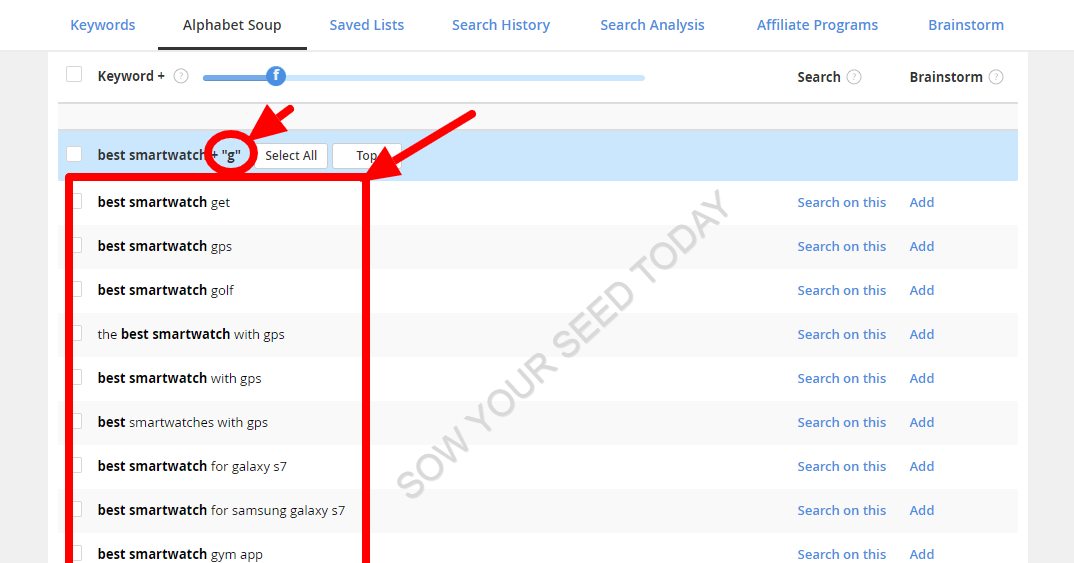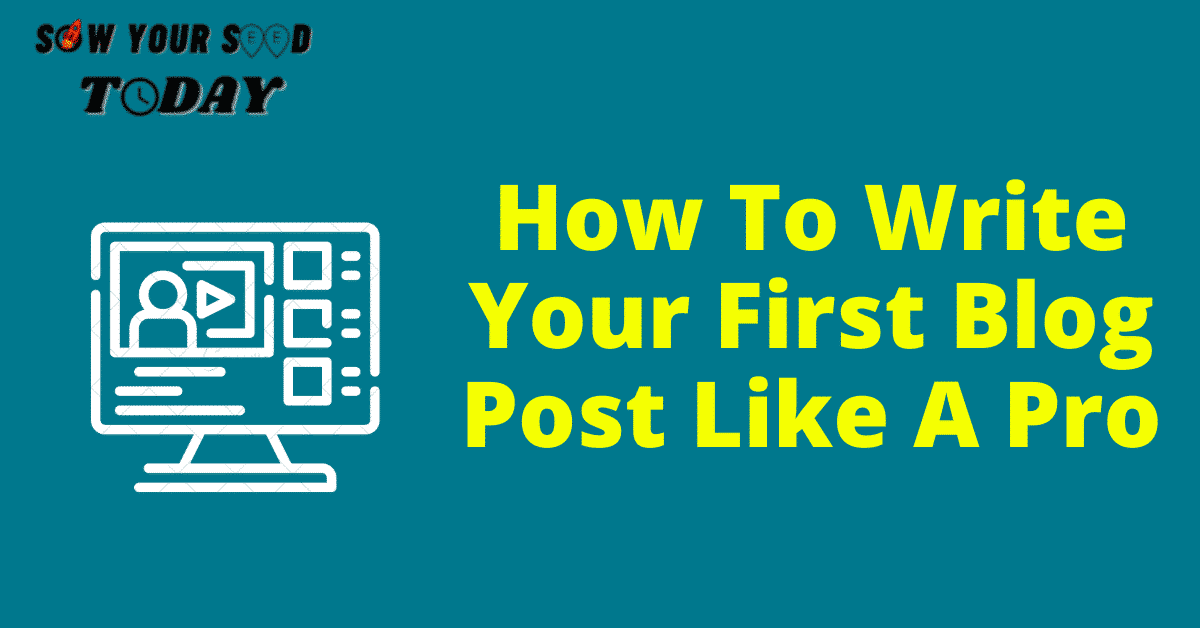Welcome to my website.
If you are on this page chances are you are a new blogger and you don’t know how to write your first blog post. Maybe you don’t have any blog post idea or you have an idea but you don’t know what to say or the way you can write a compelling and engaging post your audience will like.
You are not alone. We all have been there!
The problem most of us have is that we’re not really experts in our niche when we start writing.
However, as an affiliate marketer, it’s imperative that we write content that will help us build our audience.
I am sure you come once on this quote “CONTENT is KING“. And that is a no sense sentence because no matter the channel you will use, you are required to create a piece of content in order to build your audience and then promote your products or services to them.
In blogging, we are required to write blog post after blog post so that we can get noticed by search engines like Google and then get rewarded for our effort (get free traffic).
And a blog post is not like a social media post where you can just jot a few words or an image and get people eyeballs on it overnight.
You need a least 300 words in order to not get your blog post labeled as thin content that can lead your site to a thin content penalty.
So…
How do you write a blog post when you don’t feel like you are qualified to help people online?
This is exactly what I will be covering in this blog post.
But before we get into the nitty-gritty of how to write your first blog post, I want you to know this…
You become an expert by researching and practicing – No one is born a writer
I know if are just starting out, writing good content will be a challenge. Mainly if you are not good at writing like me.
But the good news is that you don’t need to be a good writer or a best-seller author in order to make money with blogging.
You need to communicate with your audience in a way they can read, understand your thoughts or ideas and engage with your content.
To give you an example of a first blog post that chuck, take a look at the image below.

Don’t worry because this is my first blog post and not someone else’s blog post to mock the person.
I have updated this blog post. But the first published content was horrible and even the keyword I am targeting doesn’t make sense regarding my niche.
I thought to trash this no sense post several times. But I didn’t!
Do you know why?
Because it is there I started my blogging journey. It is from this post I developed this blog at the stage it is right now.
It is from this post I got my first 1000 readers, then my 2k readers, 5k readers, and so on.
It is from this blog post I made my first $100, then my first $1000, and so on.
I didn’t finish writing this blog post and commission is coming day after day!

So…
Even right now you still feel you are not qualified to write great content to help your audience, don’t let this feeling sit you back or prevent you to start your blogging business. Stop making excuses and go for it.
We all started somewhere. And today expert has been a beginner somewhere.
As I said earlier, you don’t need to be a best-seller author to succeed in blogging. While reading my blog posts, you can see that my writings still need improvement.
But I am pleased to tell you that I am making a 4 figure income from this blog. People care about the value you can bring in their lives with your business, not your perfection in writing.
That being said,…
How to write a blog post when you feel like you are not qualified to help people online?
Here are tips to write a post for your niche site even if you feel like you are not qualified to help people online:
1. Define your audience
If you want to write the perfect blog post, that will not only drive traffic to your site but also make you money, you need to define your audience. That also means defining your perfect readers or customers’ avatar.
Who do you want to attract to your website? Their gender, age, income level, lifestyle, etc.
It is based on the type of people you want to attract to your site you will figure out how to attract them on your blog.
To help you to determine your ideal audience, I have created a customer avatar worksheet you can download by clicking on the button below
2. Decide on the keywords that your audience is searching for online
After you know what is your niche and your ideal audience, I mean the type of people you want to attract to your site, your next task is to figure out what terms they type on search engines like Google to find information online.
It is easy to imagine what your targeted audience is searching for in your niche even if you don’t master your niche.
Let’s say you are in the Make Money Online niche.
Obviously, people in your niche will be searching for subjects like:
- How to make money online?
- How to make extra money online,
- Ideas to make money online, etc.
Even if you don’t know exactly what your audience is searching for online, there are online tools like Jaaxy that can help with that.
For instance, if you type your niche name on Jaaxy in the alphabet soup section, you will get different search terms people use online from A to Z.
Let take an example with the tech niche. By using a term like “smartwatch” with the Jaaxy alphabet soup technic we get the results below.

As you can see, these are the keyword ideas we get with the letter “b”. And results go from A to Z.
From the results, you can even go deeper by taking any term from the list and starting the search process again.
Here is the results with the term “best smartwatch”.

We get more keyword ideas. And what I like about this tool is that you can not only use it to find long-tail keyword ideas, but also you can use it to do in-depth keyword research and analysis that will help you find easy to rank keywords for your brand new blog.
Another tool you can use to find keyword ideas is answerthepublic.com. With this tool, you can generate Pretoria keyword ideas.
Here below are keyword ideas I get with the term “smartwatch”.

3. Do Keyword research and analysis
writing a blog post without any keyword research is like crossing a highway blindfolded.
After you have found a keyword idea, the next step is to do keyword research in order to figure out if it is worth writing for that keyword or not.
Keyword research is a much and not an option if you want to create blog posts that will rank higher on search engines like Google.
If you are a wealthy affiliate member, you can use the Jaaxy keyword research tool to perform in-depth keyword research.
Another tool you can use is Long-tail Pro. Both tools allow you to find long-tail keywords.
While the traffic of these kinds of keywords is low compared to short keywords, they usually have a higher conversion rate because they are more specific.
For example, start a blog is short term keyword.
How to start a blog with Bluehost is a long-tail keyword. The term is specific and when someone is looking for information using this keyword we already know what they want.

Must-read post: How to do keyword research for SEO – an in-depth guide for new bloggers.
4. Craft a tittle for you blog post
Once you have finished with the keyword research and analysis process, the next step is to craft a title of your blog.
For that, you can get inspired by your competitors by just performing a search using your keyword on Google.
For example, if I choose a keyword like “best smartwatches for Android phones”, my title can look like this “Top X best smartwatches for Android phones in 2022” (X = the number of smartwatches I want to cite in my blog post).
Make sure you use a catchy title so that when your post gets ranked on Google it gets a higher CTR (Click Through Rate).
Once you have your blog title and the exact keyword to target, your next step is to start writing your blog.
If you don’t have any idea what to write, here is the way to go…
5. Get idea from your competitors and get inspired
If you don’t master your niche or the subject you want to cover in your blog, you can
use Google to make searches on the subject you want to write about.
For that, open your favorite browser (I use Google Chrome) and type or paste the keyword phrase into the search bar, and hit enter.
To get refined results you can include quotation marks on both the start and the end of your keyword.
Let’s say my keyword is “best smartwatch for android phones”. I would put that in the browser exactly like that with the Quotes around it and then hit the search button.
Google will display results that match your query.
- Open the top 10 results (each in a new tab).
Once you have completed the search part, you know have a bounce of results in front of you.
Now you have to go through the first and maybe the second page of the results, and open at least 10 pages, each in a new browser.
6. Select the best ones that address the subject or the topic
Now you have at least 10 blog posts opened in 10 different new tabs, your task is to scan them quickly and then choose the best ones that address the topic the right way – your favored ones and then close the rest.
I suggest you choose 2-3 posts to learn about the subject.
Each of those 2 or 3 posts addresses the same subject in different ways. That means you will get different ideas, and opinions about the subject.
The objective here is to get inspiration – not to copy the content of your competitors.
Bear in mind duplication content is against Google guidelines and copying other people’s content to post on your blog won’t get you anywhere.
7. Structure your post in a way search engines and your audience can read and understand easily
Once you have learned about the subject you know have ideas and knowledge.
Your next step is to structure your post in headline H1, H2, H3, etc
H1, H2, are SEO terms.
They mean the title and sub-titles of your blog post.
For instance, H2 is a sub-title of your H1 (title).
H3 is a sub-title of your H2 and so on.
Example of blog post structure:
H1: title of your blog post
Introduction
H2: Subtitle 1
H3: subtitle 1 of the subtitle 2
H3: subtitle 2 of the subtitle 2
H3: subtitle 3 of the subtitle 2
H2: subtitle 3
H3: subtitle 1 of subtitle 3
H3: subtitle 2 of the subtitle 3
H4: H3′ s subtitle 1
H4: H3′ s subtitle
Conclusion
By writing your title and subtitles first, you can see the direction your post is going before you begin. This is important because you want your post to easily flow from the first opening paragraph to the last concluding paragraph.
In each section, you have to write paragraphs that sustain your idea in those different sections (H2, H3, and so on).
Make sure your paragraphs are not more than 2, maybe sometimes 3 sentences, long.
If your content is well structured and easy to read, your readers will love your post.
And it’s important for you to know that I am not asking you to copy someone else’s work. But rather to research from their post.
Today expert has been a beginner one day.
And we are been a beginner on something.
The process of becoming a master is by practicing and we don’t need to be a good writer to make money blogging either.
What we need to do is to communicate with our readers, provide solutions and information they are looking for.
Be an ACTION taker, SOW YOUR SEED TODAY!
To your success!

You may also like…








